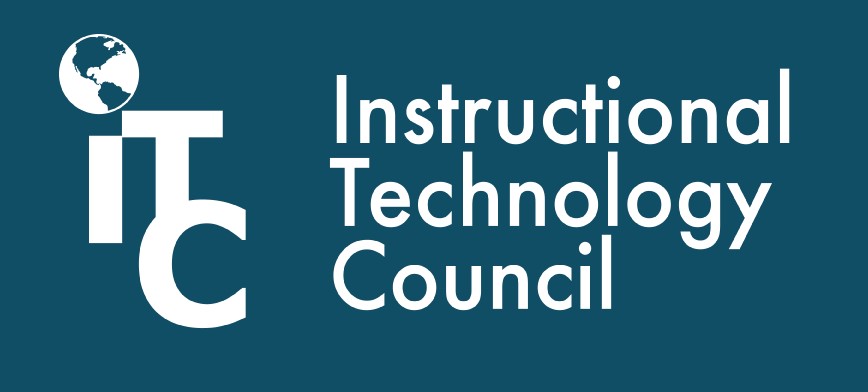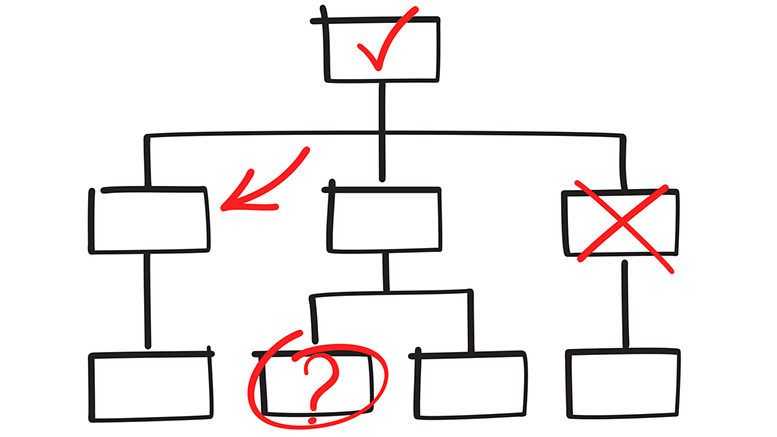Reporting structures vary widely among institutions and change over time. According to the annual ITC survey, distance learning reporting structures shifted from “technology” to “academics” ending up with 80% of respondents indicating that they report to an academic administrator (vice president of academic affairs, academic dean or library director) in 2020, up from only 49% in 2005. Interestingly, the survey lists library directors as academic, because libraries themselves underwent a shift in reporting structure between 1998 and 2004 with more, and then fewer, reporting to chief information officers (CIOs). There are even bifurcated distance education reporting structures where the academics (e.g. instructional designers) report to academics and the technologists (e.g. LMS administrators) report to technologists.

Likewise, there are a variety of viable variations in structuring audio-visual (A/V), educational media or multimedia resources departments and information technology organizations. At the community college where I work on multimedia resources, enterprise support and desktop support all report to the CIO position, but distance education and the library report through a dean to the provost. At the university where I previously worked, IT was segmented into academic and administrative computing and A/V reported through the library shifting over time to the provost and then to the CIO.
This article is part of a biweekly series provided by the Instructional Technology Council, an affiliated council of the American Association of Community Colleges.
All of this reminds me of a “trick” question I’ve slipped into more than one job interview: “Describe the typical community college student” – correct answers vary widely, and the only wrong answer is assuming there is a single, definitive right answer. Our students are unique individuals with varied backgrounds and it is our goal to help each achieve academic success, just as our intuitions have a wide variety of resources and potential structures that can all support our missions.
With so many right answers, are there any wrong answers?
Absolutely! Although I’m skeptical that a “perfect” structure exists, I’m confident that there is one that will work well at your college, and it may be unique or original. But, to be successful, any organizational structure, and particularly any reorganization, must be rational and supported by stakeholders. In short, it must be “sold” to the entire organization.
When I was assigned the leadership of our college library, in addition to our distance education operation, people questioned it. I would have had to invest valuable energy (which I didn’t have, given the increased responsibility) in responding to detractors if I didn’t have a facile explanation. I was able to explain that both the library and distance education were responsible for connecting educators and educational materials, wherever they were in the world, with learners, wherever they were in the world.
Admittedly, this was more of a rationalization than a rationale, but it worked. The reorganization was smooth and well supported by the college community. Because there are many possible right answers, we could have invested valuable energy in seeking the perfect structure. Instead, it is more reasonable to simply avoid the wrong structures – the ones that won’t work or are inferior options.
Three lenses or two questions
When designing an organizational structure, one technique is to look at the structure through the three lenses of innovation: desirability, feasibility and viability. Just ask: will stakeholders want (or at least accept) the structure, can we do it and is it sustainable? I’ve even gone so far as to simplify the decision-making further, to just two questions: will it work, and is there a better way?
I was recently asked to consolidate learning resources (distance and library) with information technology (enterprise, desktop and A/V) due to the resignation of the former CIO. I spent weeks brainstorming alternate structures, but in the end, simply merging the five areas would work. Many other structures that would also work were proposed and analyzed. Of the alternatives, none could be shown as markedly better. Because any change is disruptive, I ended up suggesting that “if it ain’t broke, don’t fix it” and a straightforward merger is pending approval.
Why reorganize, anyway?
I’ve seen a few successful “just because” reorgs. But very few. They were usually explained as efforts to maximize efficiency or reallocate resources. I’ve also seen a few that were disasters. Generally, small tweaks happen over time, just as small changes happen over time. But really big changes provide significant opportunities to revisit organizational structures.
Significant changes could include: the retirement of key employees, the shift from physical to digital materials or a transition from on-campus to online learning and certainly the predicted enrollment decline in 2025. Triggers such as these often call for major reorganizations. Other trends, such as convergence, integration and decoupling, which I talked about in a blog post from 2010 and intend to revisit in a future CCDaily article, may also precipitate reorganizations in the future.
Regardless of the cause, the three lenses or two questions should help while you consider the many excellent, but rarely perfect, organizational structures available to academic institutions.





